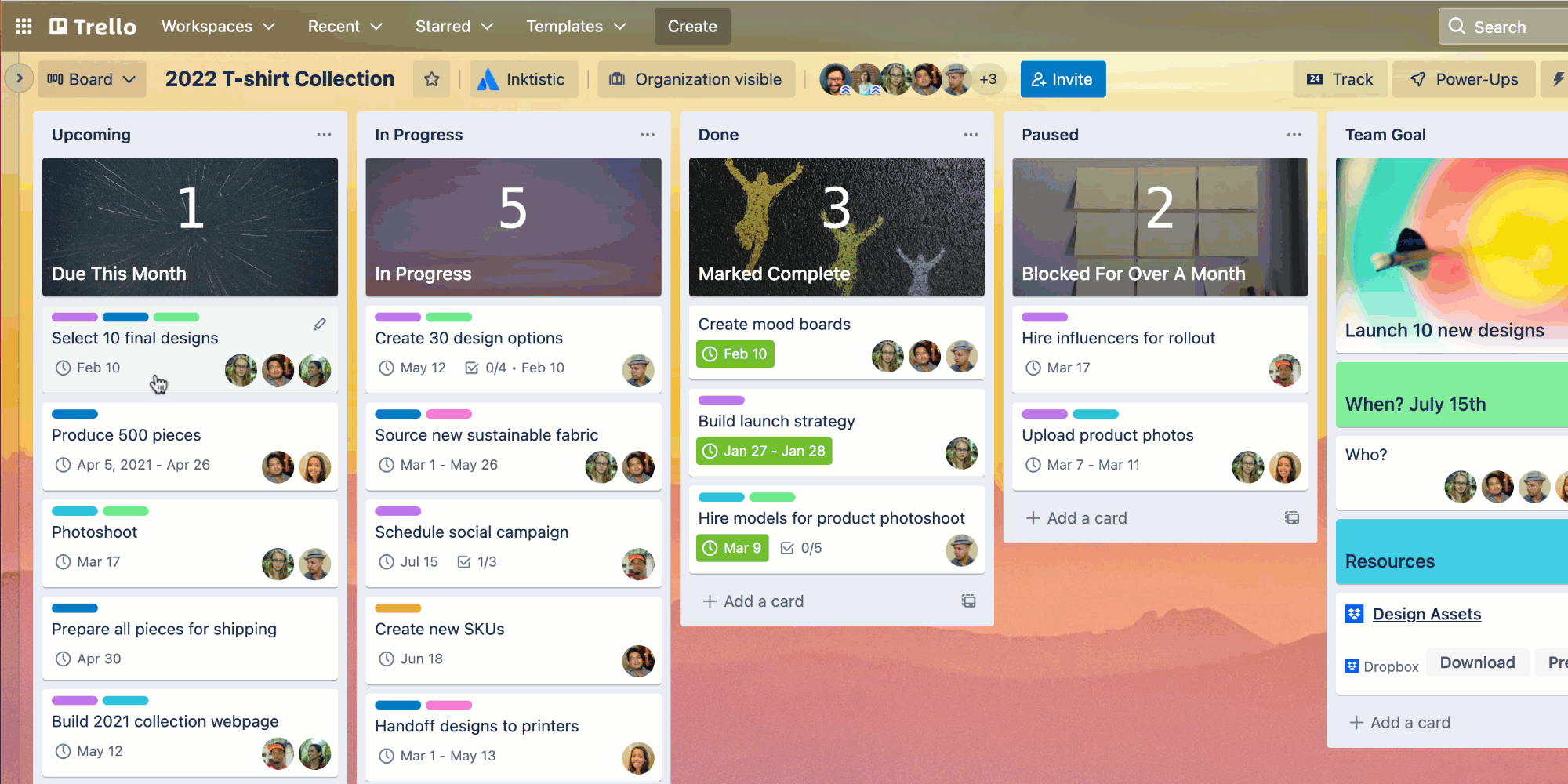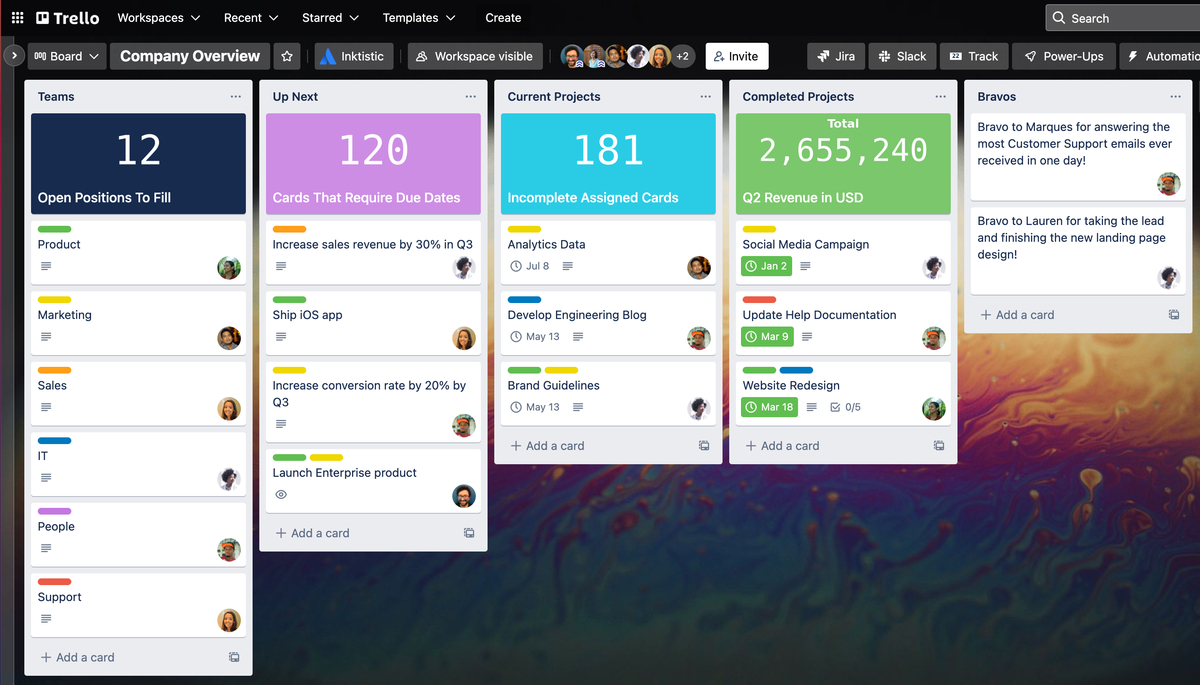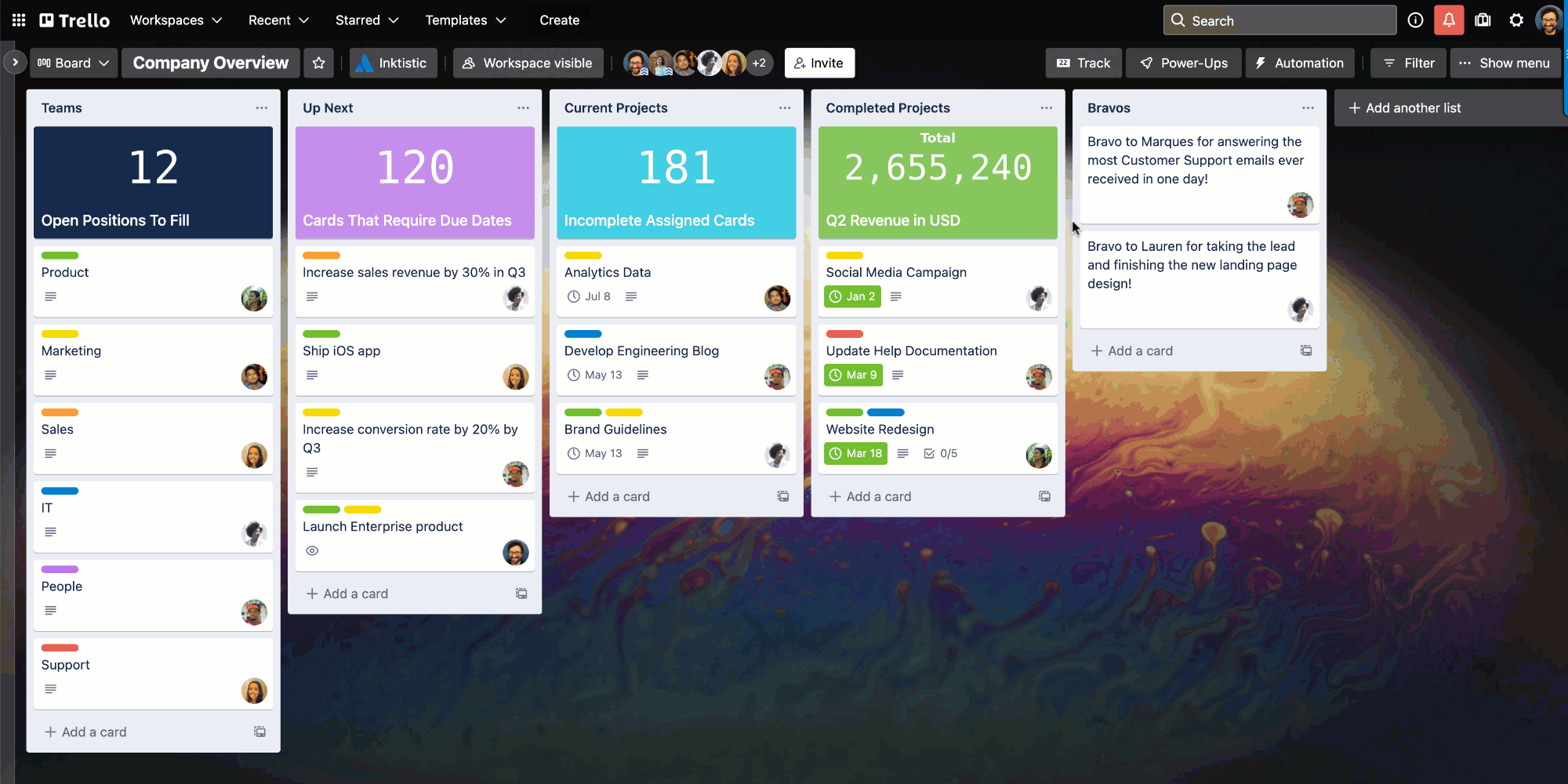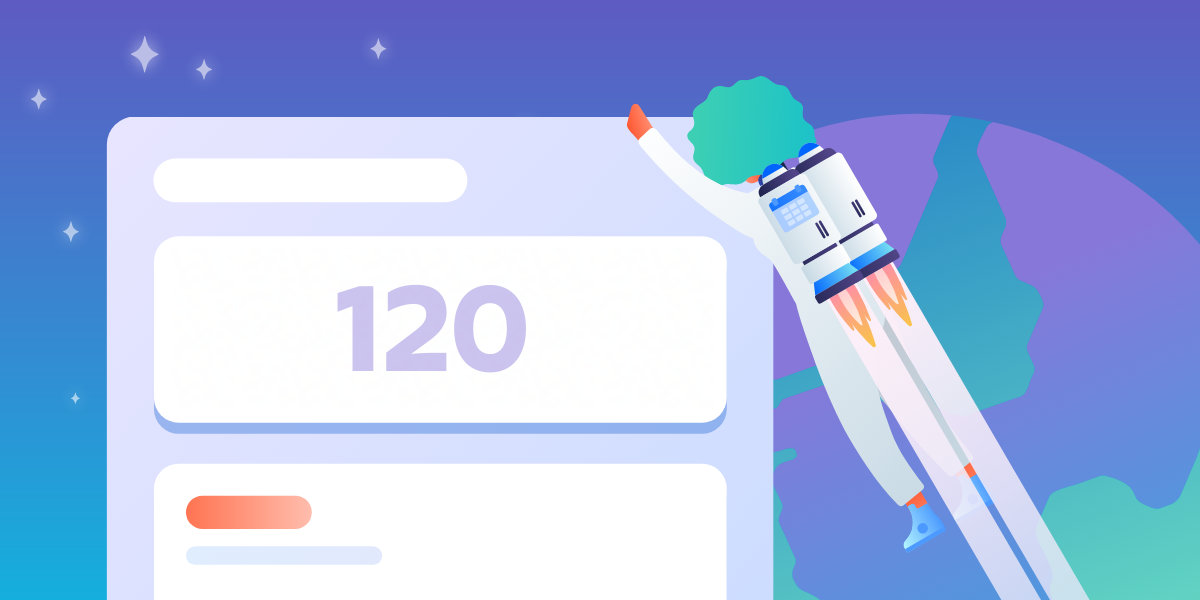Like the rising and the ebbing of the tides, the shifts and flows of our work life are ever changing and varied. Often, day-to-day tasks are fairly consistent and, like the tides, are predictable, but unknowns are always on the horizon, stirring up the seas of change that put businesses at risk of missing deadlines and goals.
The inability to see all of the moving parts that make up the big picture or the real time data to act upon quick shifting changes can cause bottlenecks, delays, and burnout. On the flipside, when work happens across so many places in an organization, losing sight of positive growth and company wins means missed opportunities to celebrate the successes that bring teams together.
But what if you could organize all of this mission critical information, let Trello track any changes in real time, and get alerted when there is something you need to worry about? Best of all, what if you could do this all from a Trello card on the boards you already rely on daily?

That is why we are excited to announce the release of Dashcards, available to all users, an innovative visual way to track work across your Workspace boards and monitor changes in real time. Create filters for custom sets of data, like “cards assigned to me on all Workspace boards,” “cards due this week,” “cards with red labels,” and track all of those cards that match the criteria right on your Trello board.
At a glance, Dashcards display the number of cards that match the filter as a card cover, and can be clicked into to explore individual cards and metrics that make up the set. Plus, since so much of our work is done in collaboration with teammates and beyond, Dashcards act just like any other card on your board, opening up entirely new ways to discuss and report on goals and projects at a higher level than ever before. This means that they can be prioritized and moved across lists, have due dates, members, comments, and more.

To illustrate this point, here are just a few of the ways Dashcards can be brought into your workflow:
- Build a company overview board for all initiatives to get a high level view of what’s getting done and what could be blocking progress.
- Track workloads across boards, whether it is your own to-dos or ensuring the team’s workload is manageable.
- Keep an eye on the health of a sales pipeline by summing up deal opportunities stored in numeric Custom Fields.
- Stay on top of trending feature requests, bug reports, and support cases to keep customer success running at all time highs.
There’s so much power and possibility with Dashcards to unpack, so let’s dive into the details that’ll help you get up and tracking today.
Getting started with Dashcards
I never want to use the phrase “it’s easy to…” lightly, but it is really easy to create your first Dashcard! It’s basically like following a recipe, a dash of this, a dash of that (cringe), and voila you’ll have a data laden feast for the eyes. Of course, not everyone loves to cook, so we’ve also included the microwave dinner version of Dashcards with templates for some of our most popular use cases.
Looking at the example gif below, on my team’s weekly meeting board I want to be able to get a quick overview of everyone’s upcoming workload so that we can plan accordingly, and make sure everything stays on track, so I create a Dashcard for each team member that tracks their assigned cards with due dates in the future across our Workspace boards.

Enabling the Dashcards Power-Up and creating your first Dashcard:
- Add the Dashcards Power-Up from the Power-Ups directory on your board or from this link.
- You will now see a new “Track” button in your board’s header. (If you don’t spot it, go to the Power-Ups menu in your board header and click on the “…” next to ‘Track’. Then make sure ‘Show on board’ is chosen.)
- Click the “Track” button in your board’s header to open the Dashcards menu.
- Choose from one of the eight Dashcard templates or select “Customize” to build your own.
Pro tip: Quickly create a Dashcard to count the cards in a list by clicking on the three dots at the top of any list and selecting “Track with Dashcard.”
Creating a custom Dashcard:
- From the Dashcards menu select the “Customize” tile or click the “Customize” button on a template Dashcard.
- Name the Dashcard after what you plan on tracking and select a meaningful color or photo background for the Dashcard, just like your Trello board.
- Select from the filter dropdown menus the criteria you would like to track, including Custom Fields.
- Click “Start tracking” to add the Dashcard to your board.
- Just like any other card, Dashcards can be moved and organized however you like.
Click a Dashcard to explore more

While the Dashcard’s card cover keeps a tabulation of matching cards and data, clicking on a Dashcard allows for you to explore those cards in greater depth. On the card back, you will see a new Dashcard section that has three key features:
- A toggle that allows the creator of the Dashcard to select whether or not other board members who can view the Dashcard can also explore all of the cards matching the Dashcard filters, even if they do not have access to the original boards those cards are on. (Note: Regular Trello permissions still apply when it comes to editing the cards and accessing the boards they are on.)
- A display of the first 10 matching cards, you can go directly to any card by clicking it.
- A button to “Explore” where you can filter, and sort all of the matching cards, view metrics and historical changes, set alerts, and the creator can edit the Dashcard.
Sifting through the data
Click the “Explore and edit” button on the card back and you will land in a table of matching cards. For all the data nerds out there, the fun is just getting started!
Within the Dashcard’s table, you have the ability to dig deeper into the information most relevant to you by selecting columns to hide, sort, pivot, and visualize. Click on any part of any visualization and your table will automatically update allowing you to do extremely powerful things.

For instance, if I wanted to look for trends on incoming work over the previous year in order to identify patterns of busy seasons, I could visualize the “Created” column and see monthly hot spots where there is a higher frequency of cards being created. Click on a hot day to see the table updated to just cards created on that day (or month). Maybe that’s still a lot of cards, so now visualize just that subset by who is assigned! Now you can interact with that as well to manage workload distribution.
This gives me the ability to plan ahead and make sure the team is ready for busy months so that we can minimize burnout, and find opportunities to take on new projects during the lulls.
Metrics, history, and alerts
For teams that utilize Custom Fields on their cards to organize specific data points relevant to the board, Dashcards can display not only card counts, but also information from any numeric Custom Fields. This can be selected from the Metrics tab within a Dashcard. From this tab you can choose any numeric field to display the sum, maximum, minimum, mean, or median.
Look back in time and see historical changes to the number of cards tracked over the past month in the History tab. Click on a day to see changes to cards being tracked, such as which cards started tracking, ended tracking, and have continued to be tracked. (This feature is available only to Premium and Enterprise customers.)
Finally, even though your new Dashcards are beautiful data powerhouses to behold, we understand that work happens outside of Trello so you probably can’t sit there staring at them all day waiting for the numbers to change. That’s why we’ve created alerts that can notify you or others based on changes to the cards you are tracking, such as when the number of cards exceeds a certain threshold, by posting an alert to a Slack channel or via email. Alerts can only be set up by the creator of the Dashcard from the Alerts tab, but can be sent to any Slack channel or DM, email recipients, or any combination thereof. (This feature is available only to Premium and Enterprise customers.)
We hope that you are just as excited as we are to bring Dashcards into your workflows to track work like never before!
